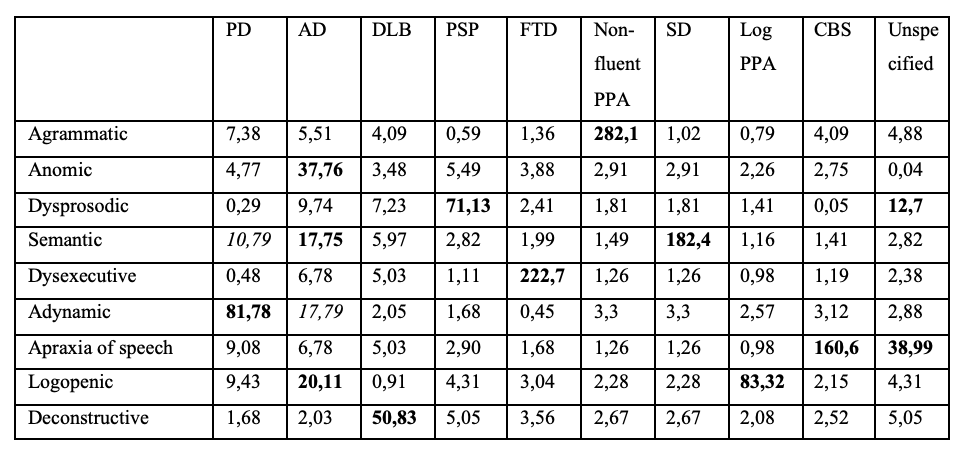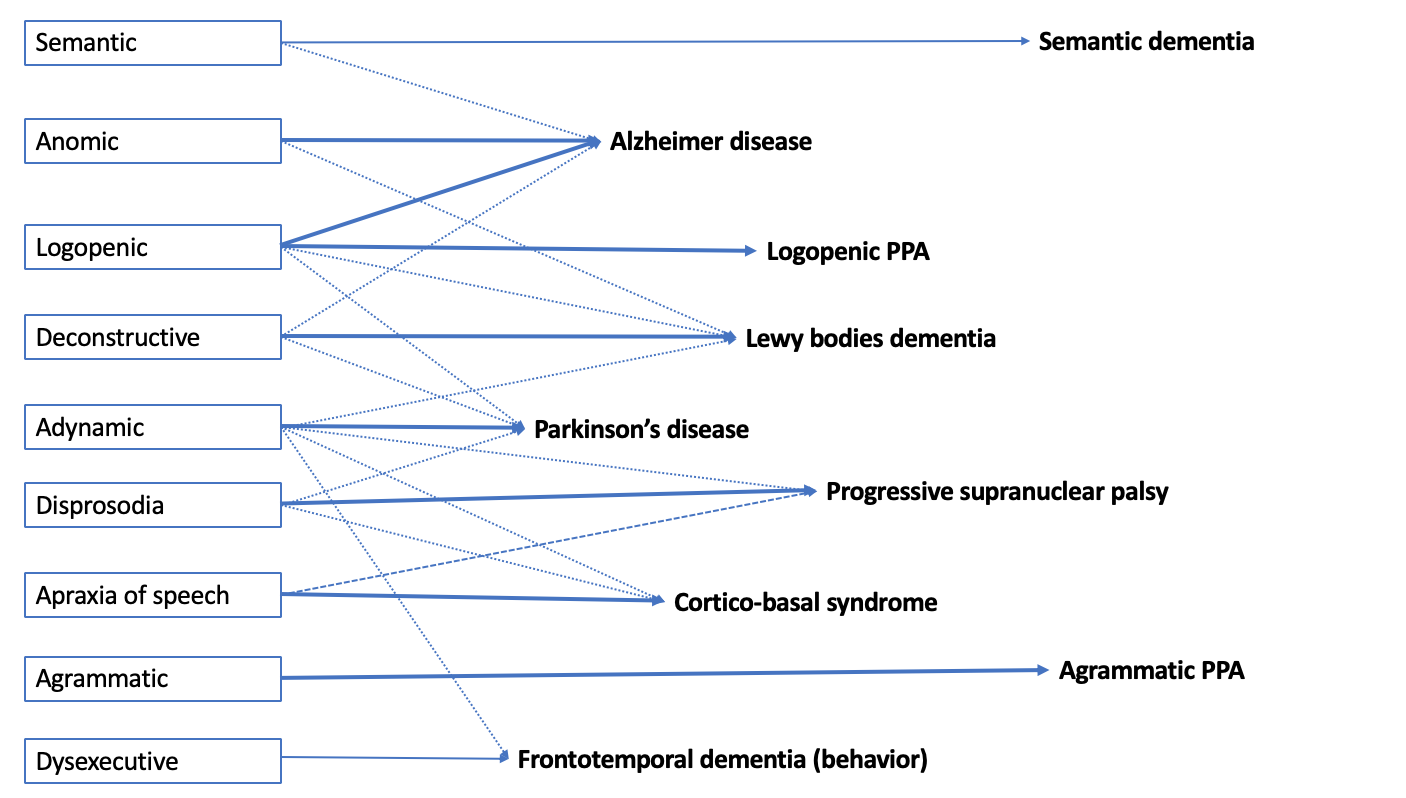Category: Parkinson's Disease: Non-Motor Symptoms
Objective: To classify and identify the features of speech disorders in Parkinson’s disease and other neurodegenerative diseases.
Background: No unified approach to classification and diagnostics of various speech disorder forms in neurodegenerative diseases (NDDs) including Parkinson’s disease (PD) has been developed to date.
Method: 1016 patients with NDDs were included in the study. All patients were screened for cortical speech disorders (pure dysarthria was not considered). Patients demonstrating speech and language disorders (42,1%) were examined using the speech disorder assessment test battery we have developed. Parkinsonism severity was assessed (where applicable) using part 3 of UPDRS, cognitive impairment was assessed using ACE-R, anxiety and depression using HADS, apathy-with AES.
Results: By means of cluster analysis and multifactorial analysis we identified 9 subtypes of speech disorders in NDDs as dysphasia. Contingency analysis allowed to match dysphasia with forms of NDDs and chi-squared index was used as specificity index [table 1]. All kinds of dysphasia were separated as core and additional for all forms of NDDs [figure 1]. In PD group (78 patients with prominent speech disorders) none of the dysphasia forms were associated with parkinsonism severity and general severity of cognitive impairment, which allowed to consider dysphasia as a separate clinical syndrome. Dysprosodic dysphasia differentiated by severity of axial symptoms (F value=3.279, p<0,05), adynamic dysphasia was associated with more pronounced apathy (F value =4,2, p<0,01), deconstructive dysphasia – with impairment of visual-spatial functioning (F value 29,93, p<0,0001), while logopenic dysphasia was associated with more severe attention deficiency.
Conclusion: Speech disorders in NDDs are heterogeneous and can be regarded as manifestations of dysphasia. Identification of various subtypes of dysphasia will allow for optimizing the treatment and prognosis of NDD and particularly PD patients.
To cite this abstract in AMA style:
E. Vasenina, O. Levin. Dysphasia as a novel approach for classification of speech disorders in Parkinson’s disease and other forms of neurodegeneration [abstract]. Mov Disord. 2020; 35 (suppl 1). https://www.mdsabstracts.org/abstract/dysphasia-as-a-novel-approach-for-classification-of-speech-disorders-in-parkinsons-disease-and-other-forms-of-neurodegeneration/. Accessed April 3, 2025.« Back to MDS Virtual Congress 2020
MDS Abstracts - https://www.mdsabstracts.org/abstract/dysphasia-as-a-novel-approach-for-classification-of-speech-disorders-in-parkinsons-disease-and-other-forms-of-neurodegeneration/


